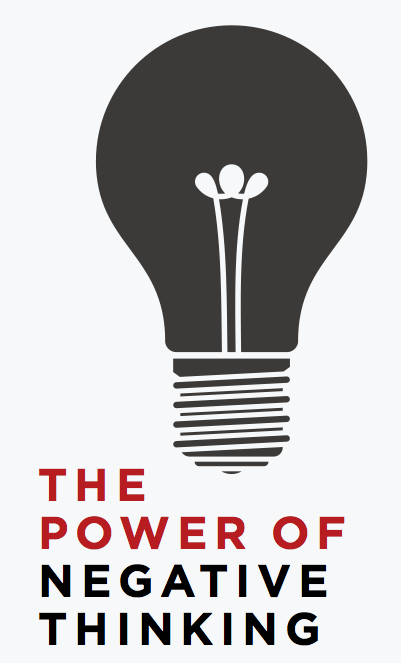04:47:02 am 10/11/2023
Viewed: 4689
Title: The Power of Negative Thinking: How Pessimism Shapes Your Reality
Negative thinking, much like positive thinking, wields a profound influence over our lives. In this blog post, we'll delve into how negative thinking can create negative experiences and explore real-life examples of its impact on various aspects of our existence.
1. Perception Filters: Viewing the World through a Negative Lens
Negative thinking acts as a filter through which we perceive the world. When we constantly hold pessimistic beliefs or expectations, we tend to notice and magnify negative aspects of situations while downplaying the positive.
Example: If you believe that others generally dislike you, social interactions may be colored by your negative bias. You could interpret friendly gestures as insincere, leading to strained relationships that reinforce your negative belief.
2. Self-Fulfilling Prophecy: When Negative Thoughts Become Reality
Negative thinking can morph into a self-fulfilling prophecy. Expecting failure or disappointment can subconsciously drive behaviors that align with those expectations.
Example: Doubting your abilities in a new job may lead to subpar performance, missed opportunities for growth, and eventually, the realization of your worst fears – job loss.
3. Emotional Impact: The Toll of Negative Emotions
Negative thinking breeds negative emotions, which can take a toll on mental and physical health. Persistent exposure to emotions like fear, anxiety, and sadness can lead to chronic stress, resulting in various health problems.
Example: Worrying excessively about potential health issues may increase stress levels, potentially impacting physical health, such as elevated blood pressure or a weakened immune system.
4. Limited Problem-Solving: Hindrance to Finding Solutions
Negative thinking can impede effective problem-solving. When you're fixated on potential problems, creative and clear-headed approaches to challenges become elusive.
Example: Financial difficulties can seem insurmountable if your thoughts are dominated by fear and hopelessness. This mindset can hinder your ability to brainstorm solutions or seek assistance.
5. Strained Relationships: The Impact on Interpersonal Connections
Constantly expecting the worst from others can strain relationships. Distrust, defensiveness, and conflicts often result from a consistently negative outlook.
Example: A belief that your partner will inevitably betray you can lead to suspicion and accusations, eroding trust and intimacy in your relationship.
6. Missed Opportunities: Letting Fear Hold You Back
Negative thinking can lead to missed opportunities. Fearing failure or rejection may deter you from pursuing new experiences or taking risks that could lead to personal or professional growth.
Example: The fear of failing in a new venture may prevent you from starting your own business, despite having a brilliant idea and the necessary skills.
7. Reduced Resilience: Prolonged Distress in the Face of Adversity
Negative thinking can undermine resilience. When confronted with setbacks, individuals with a negative mindset often dwell on the negative aspects of the situation, leading to prolonged distress and slower recovery.
Example: A career setback, such as job loss, may result in extended depression and difficulty bouncing back for those with a consistently negative mindset, making it challenging to find new opportunities.
In conclusion, negative thinking has a significant impact on our lives, shaping our perception, influencing behaviors, generating negative emotions, limiting problem-solving abilities, straining relationships, causing missed opportunities, and reducing resilience. While occasional negative thoughts are natural, consistent pessimism can adversely affect various aspects of our existence. Recognizing and challenging negative thought patterns is a crucial step toward cultivating a more positive and constructive mindset.
Negative thinking, much like positive thinking, wields a profound influence over our lives. In this blog post, we'll delve into how negative thinking can create negative experiences and explore real-life examples of its impact on various aspects of our existence.
1. Perception Filters: Viewing the World through a Negative Lens
Negative thinking acts as a filter through which we perceive the world. When we constantly hold pessimistic beliefs or expectations, we tend to notice and magnify negative aspects of situations while downplaying the positive.
Example: If you believe that others generally dislike you, social interactions may be colored by your negative bias. You could interpret friendly gestures as insincere, leading to strained relationships that reinforce your negative belief.
2. Self-Fulfilling Prophecy: When Negative Thoughts Become Reality
Negative thinking can morph into a self-fulfilling prophecy. Expecting failure or disappointment can subconsciously drive behaviors that align with those expectations.
Example: Doubting your abilities in a new job may lead to subpar performance, missed opportunities for growth, and eventually, the realization of your worst fears – job loss.
3. Emotional Impact: The Toll of Negative Emotions
Negative thinking breeds negative emotions, which can take a toll on mental and physical health. Persistent exposure to emotions like fear, anxiety, and sadness can lead to chronic stress, resulting in various health problems.
Example: Worrying excessively about potential health issues may increase stress levels, potentially impacting physical health, such as elevated blood pressure or a weakened immune system.
4. Limited Problem-Solving: Hindrance to Finding Solutions
Negative thinking can impede effective problem-solving. When you're fixated on potential problems, creative and clear-headed approaches to challenges become elusive.
Example: Financial difficulties can seem insurmountable if your thoughts are dominated by fear and hopelessness. This mindset can hinder your ability to brainstorm solutions or seek assistance.
5. Strained Relationships: The Impact on Interpersonal Connections
Constantly expecting the worst from others can strain relationships. Distrust, defensiveness, and conflicts often result from a consistently negative outlook.
Example: A belief that your partner will inevitably betray you can lead to suspicion and accusations, eroding trust and intimacy in your relationship.
6. Missed Opportunities: Letting Fear Hold You Back
Negative thinking can lead to missed opportunities. Fearing failure or rejection may deter you from pursuing new experiences or taking risks that could lead to personal or professional growth.
Example: The fear of failing in a new venture may prevent you from starting your own business, despite having a brilliant idea and the necessary skills.
7. Reduced Resilience: Prolonged Distress in the Face of Adversity
Negative thinking can undermine resilience. When confronted with setbacks, individuals with a negative mindset often dwell on the negative aspects of the situation, leading to prolonged distress and slower recovery.
Example: A career setback, such as job loss, may result in extended depression and difficulty bouncing back for those with a consistently negative mindset, making it challenging to find new opportunities.
In conclusion, negative thinking has a significant impact on our lives, shaping our perception, influencing behaviors, generating negative emotions, limiting problem-solving abilities, straining relationships, causing missed opportunities, and reducing resilience. While occasional negative thoughts are natural, consistent pessimism can adversely affect various aspects of our existence. Recognizing and challenging negative thought patterns is a crucial step toward cultivating a more positive and constructive mindset.
No video exists.





Comments